1) Denmark 9-0 Athens (demonstration event final, Athens 1906)
It's 1900. In times yet to come, British football administrators would infamously cock their haughty snooks at the World Cup, the European Cup, and the European Championship. Myopic and thoroughly abject clowns we. But back in the early days of the Olympic Games, Britain happily takes its place in the vanguard of the world game …
A Great Britain team competed in a demonstration event at the 1900 Games in Paris. Upton Park FC – nothing whatsoever to do with West Ham United, before Hammers fans try to claim a second world championship win for themselves – were Britain's representatives. The amateurs from East London beat a French representative side 4-0, before … well, that was all they had to do. The French XI then trounced a side from a francophone university in Brussels 6-2, after which everyone had seen enough. First place was awarded to the Brits, which shows you how far deigning to turn up can get you.
At the 1904 Games in St Louis, another demo, this time won by Canada's Galt FC, who hammered two teams from the USA: a 7-0 win over the local Christian Brothers College, then a 4-0 victory over the St Rose Parish School. St Rose were then defeated 2-0 by the unforgiving Christians, scoring their only goal of the tournament, albeit in the wrong net. Two years later, and a third three-team demonstration, this time at the 1906 Athens Games. Denmark beat an Athens XI 9-0 in the final. The Danes only needed 45 minutes to complete the rout, as their hosts flounced off in a huff at half-time, and didn't come back.
The organisers, rather generously and extremely patiently it must be said, offered the Athenians a chance to play off for second place against an international XI representing the city of Smyrna (now Izmir) and a music club from Thessaloniki. Athens refused, and were told by an exasperated Olympic committee to do one. The pram had been divested of all toys, but soon enough one of their players would have a new one. Within two years, the 18-year-old Giorgos Kalafatis founded Panathinaikos.
2) Great Britain 2-0 Denmark (final, London 1908)
All of which led us to the 1908 Olympics, and the very first official Olympic football tournament. The 1908 Games were due to be held in Rome, but when Naples was covered in lava from the volcanic eruption of Mount Vesuvius in 1906, Italy could no longer afford to host the event. London stepped in at the last minute to hold what proved to be a rain-soaked event at the 70,000-capacity White City stadium (which years later would make way for BBC Television Centre).
Eight teams were in the hat to begin with: the Netherlands, Denmark, Sweden, Hungary, Bohemia, Great Britain (selected by the FA and purely English) and France (who entered two teams). Due to political problems in the Balkans, Hungary and Bohemia were forced to withdraw so the Netherlands and France A sailed through to the semi-finals without playing a match.
That would be the sum total of good news for the French. Their B team was beaten 9-0 in the first round by Denmark, while France A were then trounced 17-1 by the same opposition in the semi-final, a result which still stands as an Olympic record. The French A team were too proud to play for bronze, so Sweden were given their place and lost to the Dutch.
England's Great Britain team didn't rattle in quite as many as Denmark en route to the final, though they did hammer Sweden 12-1 and Holland 4-0. The showdown with the Danes was played in front of an 8,000 crowd and was won by the English 2-0, the goals coming from Frederick Chapman and captain Vivian Woodward. The Official Olympic Report, however, notes the scoreline "rather flattered the winners who did not show real international form. Denmark, on the other hand, displayed the greatest vigour and determination with far more pace and dash than against France".
For an amateur event, the final wasn't short of star quality. The British captain Woodward played over 100 games for both Tottenham Hotspur and Chelsea, while Harold Hardman was twice an FA Cup finalist with Everton and later chairman of Manchester United at the time of Munich. Denmark's star man, meanwhile, was Harald Bohr, who in his day job was a mathematician – and has a theorem named after him. A theorem! He played for Akademisk Boldklub in Copenhagen alongside his brother Niels, a handy goalkeeper and winner of the 1922 Nobel prize for physics. To put shifting world views of sporting stars over the years into some sort of context, imagine John Terry saying: "L(z) is the only function that satisfies f (z+1) = z f (z) with log (f(z)) convex and also with f(1)=1, you @*$!."
3) Belgium 2-0 Czechoslovakia (final, Antwerp 1920)
For a while, it seemed the big story of the 1920 Olympic football tournament would be a shock. In the first round, Great Britain – winners at London 1908 and Stockholm 1912 – were expected to make it three from three in Antwerp. But this – a blip in the late Sixties ARF! excepted – would be the end of British dominance in world football. They were turfed out in the first round by Norway, and so went home whining about the "broken-time" payments other countries were making to their players in compensation for missing work. This circumvented the Olympic ideal, we cried. The fact that we'd already been fielding players from clubs such as Everton, Chelsea, Spurs and Derby seemed to pass us by. Oh, us! How could we! Cue isolationist tantrum which would eventually see the Home Nations miss out on all three pre-war World Cups.
But back to the 1920 Games, where the real jaw-dropping action occurred in the final between the home nation Belgium and Czechoslovakia. Robert Coppée converted a penalty on six minutes for the hosts, then on the half-hour Henri Larnoe doubled the lead with a disputed goal. Nine minutes later, the Czech defender Karel Steiner was sent off for "rough play". Czechoslovakia walked off the field, incensed that three major decisions had gone against them. They accused the British referee John Lewis of making "distorted" and "incorrect" calls, suggesting that he was biased against them as a result of a recent game he had refereed in Prague, which had ended with the whistler being attacked by the crowd. The fact that Lewis was 72 years old – he had been a member of the first-ever Blackburn Rovers team – and had latterly become notorious for struggling to keep up with play probably didn't help matters too much.
Belgium were awarded the gold medal, but with the Czechs disqualified after their appeal to have the final replayed failed, a consolation tournament was staged to decide silver and bronze. Even that would prove to be controversial as the losing semi-finalists France had already gone home and could not compete, so their place was taken by Spain – who ended up taking silver. The Spanish goalkeeper Ricardo Zamora – sent off against Italy for punching an opponent, and an alleged boozer of the first order – celebrated by smuggling a ludicrous number of Havana cigars under his seat on the train taking him back home. He was arrested, caught red-handed when, unable to resist temptation, he hung his head out of the window and started sucking his contraband down.
4) Peru 4-2 Austria (quarter-final, Berlin 1936)
Fifa's new World Cup –
won in the first instance by the great Uruguayan team who had wowed crowds at the 1924 Paris Games and the 1928 Amsterdam Games – immediately took the wind out of Olympic football's sails. The sport was dropped at the 1932 Los Angeles Games, the Great Depression doing for athletic attendance to such an extent that there was no point staging the competition. The game returned in 1936, but what unfolded did neither football nor the Olympics any credit.
In the preliminary round, the Italian defender Achille Piccini was sent off by the German referee Karl Weingartner in a match against the USA. Piccini refused to leave the field, beating Antonio Rattin to the punch by three decades. His team-mates rallied round, literally, by circling the referee. They pinned Weingartner's arms to his side, then covered his mouth with their hands. Understandably panicked and frightened, the official let Piccini stay on. Italy won 1-0; God alone knows what Alf Ramsey would have called them.
Peru had made it past the preliminaries with a 7-3 skelping of Finland, lining up a quarter-final match against Austria, homeland of you-know-who. Austria went two goals ahead on the 36 minute mark, and were coasting into the semis with 15 minutes to play. But then the Peruvians scored twice in six minutes. Extra-time. The scores remained level until, with four minutes to go, Peru scored. And then, a minute before the end, they sealed the deal with a fourth goal. A small contingent of Peruvian fans ran on to the pitch and celebrated the impending win. It would be a costly jig of joy.
After the match, Austria protested against the result, claiming the invasion had occurred when the score was 2-2, and that Peru's goals came during a period of extreme tumult. A jury of appeal, consisting solely of Europeans, ordered a replay. It did not occur. The entire Peruvian Olympic team – every single athlete, not just the footballers – went home in protest, as did Colombia by way of support. The German embassy in Lima came under attack from irate punters. Austria, meanwhile, advanced to the semis, where they did for Poland, before succumbing in the final to Italy in a predictably rough and unpleasant game.
The 1936 Games did offer one moment of light relief. Germany had beaten Luxembourg 9-0 in the opening round, so Adolf Hitler went along to Berlin's Poststadion for the team's second game against Norway, in the hope of basking in some Master Race glory. Oh Adolf! "The Führer is very excited, I can barely contain myself, a real bath of nerves," wrote Führerpal Joseph Goebbels in his diary ahead of the match. But the Norwegians were a decent side, and went ahead after six minutes. There would be Reichsteam. "The Führer is very agitated, I'm almost unable to control myself," continued Goebbels. With seven minutes to go, Norway scored a second, at which point Hitler got up and departed in a funk. Humiliated, he never watched a match again.
5) USSR 5-5 Yugoslavia (second round, Helsinki 1952)
The 1952 tournament was won by arguably the greatest, but certainly the most famous, side in Olympic history: the Hungarian golden team of Ferenc Puskas, Zoltan Czibor, Sandor Kocsis, Nandor Hidegkuti, Jozsef Bozsik and Gyula Grosics. It was a procession: Romania, Italy, and Turkey were batted aside. The reigning Olympic champions Sweden were thumped 6-0 in the semis. In the final, the gold medal was won, Yugoslavia easily dispatched 2-0 with goals from Puskas and Czibor. "It was not surprising that, after the closing ceremony, we celebrated with some wine," remembered Puskas, "though naturally in a restrained quantity only."
Despite being outplayed in the final, Yugoslavia deserved a small glass or two as well, for their progress towards it was equally memorable. They scored 26 goals to Hungary's 20, albeit in one game more. They beat India 10-1 in the preliminary round, Branko Zebec of Partizan Belgrade scoring five. In the quarters, Denmark were skittled 5-3, the team taking their collective foot off the gas to allow the Danes a couple of consolations in the dying minutes. The Yugoslavs saw off Germany 3-1 in the semi, Rajko Mitic of Red Star Belgrade the two-goal hero.
But the most memorable game occurred in the first round against the USSR, who had entered the Olympics for the first time and – with the Communist states at a distinct advantage under the amateurs-only rule – were hot favourites for the title. But Zebec, on fire after his opening-round heroics, scored again as Yugoslavia went 3-0 up by half-time, then quickly 4-0 ahead just after the break. The Soviets pulled one back soon after through Vsevolod Bobrov of VVS Moscow, but when Zebec scored his second of the game on the hour to make it 5-1, all looked lost for the Russians.
With 15 minutes to go, the score remained the same, but then the Soviets embarked on a historic comeback, one referee Arthur Ellis, later of It's A Knockout fame, suggested was "the most honourable ever recorded". They scored four in that final quarter of an hour, two of them in the last four minutes of the game. Bobrov – who also played ice hockey for the USSR and had cheated death in 1950 by taking a train when the rest of the team was wiped out in an air crash near Sverlovsk – was the star, having ended the game with a hat-trick. He opened the scoring with an early goal in the replay, but Yugoslavia came back to win 3-1. The favourites were out.
Still, small mercies, at least the team didn't have to run the gauntlet of rotten fruit pelted at them by fans when they went back to the USSR: the result wasn't printed in any papers until after the death of Joseph Stalin, nearly a year later. And the result would galvanise the Russians into coming back stronger next time round; they won gold in Melbourne in 1956. Bobrov was no longer in the team, but never mind: he won ice hockey gold at Cortina in the Winter Olympics that same year.
6) Nigeria 3-2 Argentina (final, Atlanta 1996)
Where, in some style, Nigeria proved both Pelé and Walter Winterbottom right. Kind of.
In the semi-finals, the Super Eagles faced the reigning world champions Brazil. With 12 minutes to go they were 3-1 down. First Victor Ikpeba and then, in the last minute, Kanu took the match to extra-time. Kanu's golden goal sent Nigeria into the final, where again Nigeria upset the odds. Losing 2-1 against Argentina with 16 minutes remaining, Daniel Amokachi equalised before Emmanuel Amunike scored the winner with the final kick of the game.
Four years before the millennium, Africa had a world title – albeit not the one Pelé or Winterbottom were talking about. But with the world's best strewn behind them, who's splitting hairs?
… sadly also: Peru 0-1 Argentina (Preolímpico, 1964)
The biggest football disaster in history has no place in a selection with the word "Joy" in the title. So it isn't in our six. But it did occur during an Olympic football tournament, if not at the Games itself, and as such is worthy of remembrance. Lest we forget.
The Preolímpico, the South American qualifying tournament for the Olympic Games, was particularly tight ahead of the 1964 Tokyo staging. With the round-robin league reaching its denouement, neither Argentina, Brazil nor Peru had lost a game in the group; the top two would qualify, so it was nip-and-tuck. Despite playing the hot favourites Argentina – who had just thrashed Chile 4-0 – the Preolímpico host nation Peru were determined to hold on to their unbeaten record in front of their own fans at Lima's Estádio Nacional on 24 May, four-and-a-half months before the big event in Japan.
Throughout the first half the game remained goalless. But 15 minutes into the second, Néstor Manfredi scored for Argentina. The Peruvians ramped up the pressure and, six minutes before the final whistle, scored in front of a 50,000 strong crowd, who exploded in celebration, believing they were in touching distance of a place in the competition. But the Uruguayan referee Angel Pazos disallowed the goal for – that time-honoured fiend – "rough play". A fan leapt over the nine-foot barrier and threatened him. Within seconds a shower of bottles, bricks and stones flooded on to the pitch. Fearing for his life, Pazos left the pitch, abandoning the game and declaring the Argentinians 1-0 winners.
Outraged fans invaded the pitch. Police unleashed dogs and tear gas into the closed south end of the stadium. More than 2,000 spectators tried to flee, but with the gates locked in a stadium packed to the brim, disaster was inevitable. "A few of the victims were fatally wounded by police, but most of the scores of police shots were in the air," reported the British United Press. "Instead of restoring order, they contributed to the panic." The resulting crush killed 328. "The pitch looked like a battlefield with missiles strewn everywhere," reported Reuters of the aftermath.
On the streets outside, fans set fire to cars and buses and threw paper bombs into garages. One hospital alone reported receiving 140 dead bodies. A seven-day period of mourning was declared and the following qualifiers cancelled. Argentina were awarded first place, while a broken Peru lost 4-0 to Brazil in a play-off for second. Neither South American qualifier progressed past the group stage in Tokyo
World Cup 1966
Did England rig the result?

'Concrete' Football Boots Advert 1911 (COPY 1/304/296)
England's victory in the 1966 football World Cup is one of the most celebrated events in 20th century British sport. Geoff Hurst's hat-trick, the disputed third goal, the commentator's line 'They think it's all over!' have become legends. But at the time, during the tournament itself and in the weeks afterwards, England was the subject of widespread popular hostility in some parts of the world, especially in South America.
World Cup football is extremely important in South America. Of the seven World Cup tournaments before 1966, South American countries had won four times: Uruguay twice and Brazil twice. However, of the three South American teams in the 1966 World Cup, Brazil failed to qualify in their group, and Uruguay and Argentina were both knocked out in the quarter finals.
The South American protesters claimed that England, also the hosts, had rigged the whole tournament, with the help of West Germany. They particularly complained about the referees. English officials refereed most of Brazil's games. The England-Argentine match was refereed by a German; it was a bad-tempered match and the England manager, Alf Ramsay, described the Argentinians afterwards as 'animals'. The West Germany-Uruguay match had a British referee and two Uruguayans were sent off. Strong anti-British feeling showed itself all over South America.
Tasks
1. Read Source 1. This is a confidential report to London from the British Embassy in Montevideo.
- How did the Uruguayan public react to their country's quarter-final defeat?
- Do you think this is important enough for the British government in London to need to know all about it?
- What evidence does the writer give that football is very important in Uruguayan politics?
- What harm does the writer think has been done to Anglo-Uruguayan relations?
2. Read Source 2. This is a confidential letter sent to 18 British representatives in South and Central American countries
- This letter was sent to the British representatives in which countries?
- Use an atlas to see where these countries are.
- What did they decide to do about all this football protest? Why?
- Do you think the Foreign Office took the protests too seriously? Not seriously enough?
- These letters should have been released to the public in 1996. Why do you think they were kept secret for another four years?
Background
The World CupIn the early 20th century, football between national teams took place as part of the Olympic Games. Then clashes developed between the Olympic organisers, who insisted on everyone taking part being amateurs, and the professional game. Several teams pulled out of the 1928 Olympics and called on FIFA (Fédération Internationale de Football Association) to organise an international tournament. This was held in 1930 in Uruguay. Few teams outside South America were prepared to make the long trans-Atlantic sea journey and only 13 took part. The trophy, a gold cup called the Jules Rimet trophy after the Frenchman who played an important part in FIFA, went to Uruguay. They won an exciting final 4-2 against Brazil in front of a record crowd of 200,000.
The 1966 World Cup was the 8th tournament. The next one, in 2010, will be the 19th.
South American dominance
Traditionally South American nations had not been seen as playing a big part in world affairs and were not even regarded as great all-round sporting countries. However, even by 1966, they had unquestionably dominated World Cup football. To date, South American countries have won eight of the eighteen World Cups: Uruguay twice (1930, 1950), Argentina twice (1978, 1986) and Brazil no less than five times (1958, 1962, 1970, 1994 and 2002). In Europe, only Italy (four times, 1934, 1938, 1982, 2006) and West Germany (three times, 1954, 1974, 1990) have come near to challenging this South American dominance.
British diplomacy
Britain sends ambassadors, or other representatives, to most foreign countries. These people live there and have a two-way role:
- to keep the British government in London well-informed about events, and
- to promote the reputation and interests of Britain in the country where they are living.
The topics they usually deal with are trade, tourism, military affairs and diplomacy. It was unusual for football to become the subject of such a flurry of diplomatic messages as took place in 1966. There is clearly some uncertainty on the part of both the Foreign Office and Embassy staff as to how to handle the issue.
Secrecy
Diplomatic messages are usually secret. The law concerning secrecy in Britain is that government documents should normally be open to the public after 30 years. However, the documents are reviewed prior to release and some can be held back for longer.
Teacher's notes
This is not just a football story, although the fact that the World Cup is at the centre of the row may draw in some students.
This is a story about football taking over other parts of life, including international relations. Should it? Why shouldn't it? If, as Bill Shankly famously said, 'Football is not just a matter of life and death: it's more important than that', then this is a story about real concerns breaking in on the comfortable world of diplomacy. One can sense, in the part-jokey, part-serious tone of the exchanges between the diplomats, that they are not sure how to handle it. This uncertainty can also be seen in their eventual decision to do nothing. But it must have been important enough to delay release of these documents for four years beyond the normal 30.



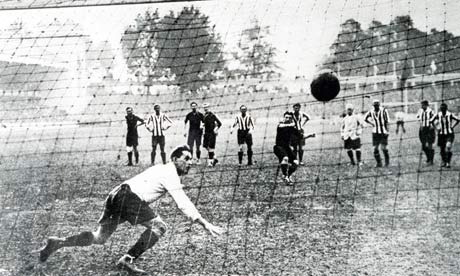

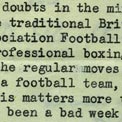
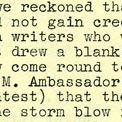

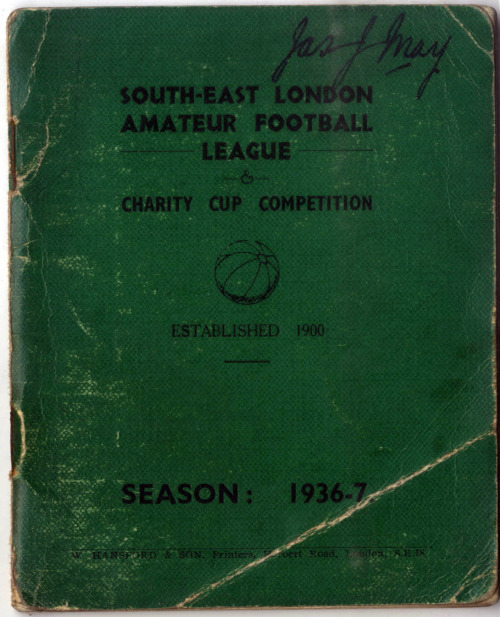
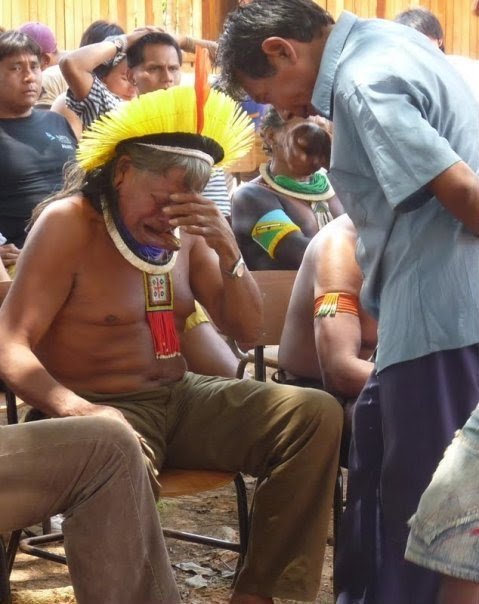



 ,London to a Russian Jewish father, 'Jack' Kashdan, and English mother,
,London to a Russian Jewish father, 'Jack' Kashdan, and English mother, Maud. At 12, he decided to become an artist, but left school at 14 to become a dentist's assistant. Attending Charles Genge's evening classes at the Working Men's Institute in Bethnal Green led to him applying to the
Maud. At 12, he decided to become an artist, but left school at 14 to become a dentist's assistant. Attending Charles Genge's evening classes at the Working Men's Institute in Bethnal Green led to him applying to the  schools.
schools. .
. Acquaintance Henry Moore brought Kashdan's work to the attention of James J Sweeney, of the Museum of Modern Art, New York who displayed his work there in 1946.
Acquaintance Henry Moore brought Kashdan's work to the attention of James J Sweeney, of the Museum of Modern Art, New York who displayed his work there in 1946.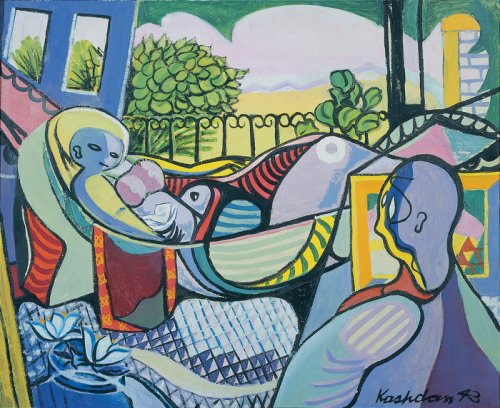
 and a small group exhibition at Surrey University in 1971).
and a small group exhibition at Surrey University in 1971).
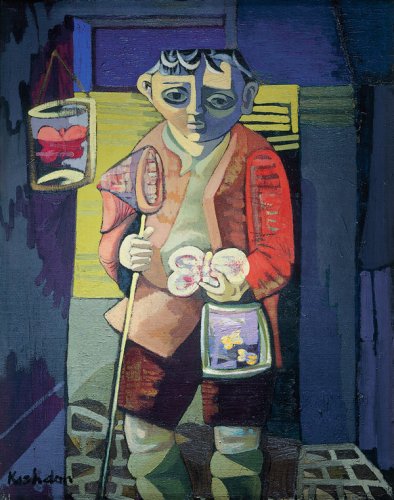
QE9s3HCn3DBRZ0+juhqg~~60_3.JPG)





.jpg)
.jpg)





.jpg)
.jpg)
.jpg)

